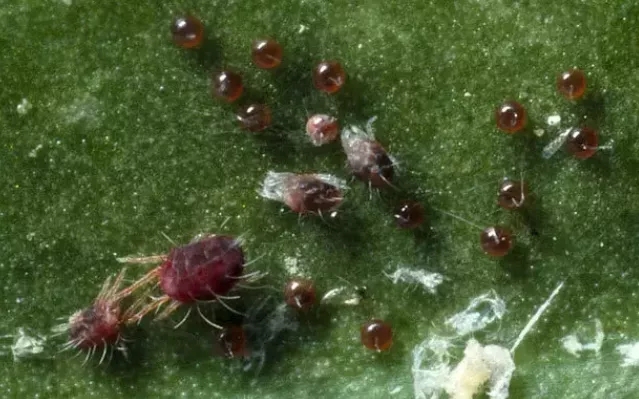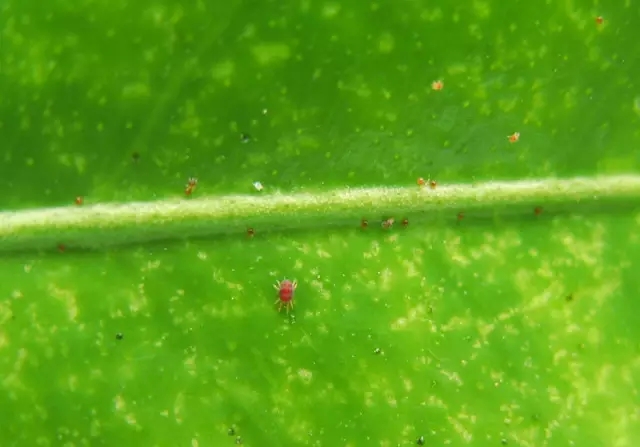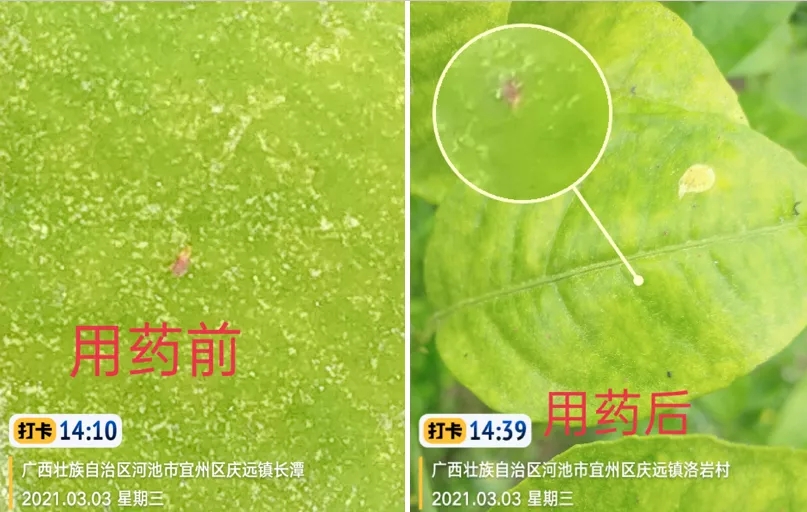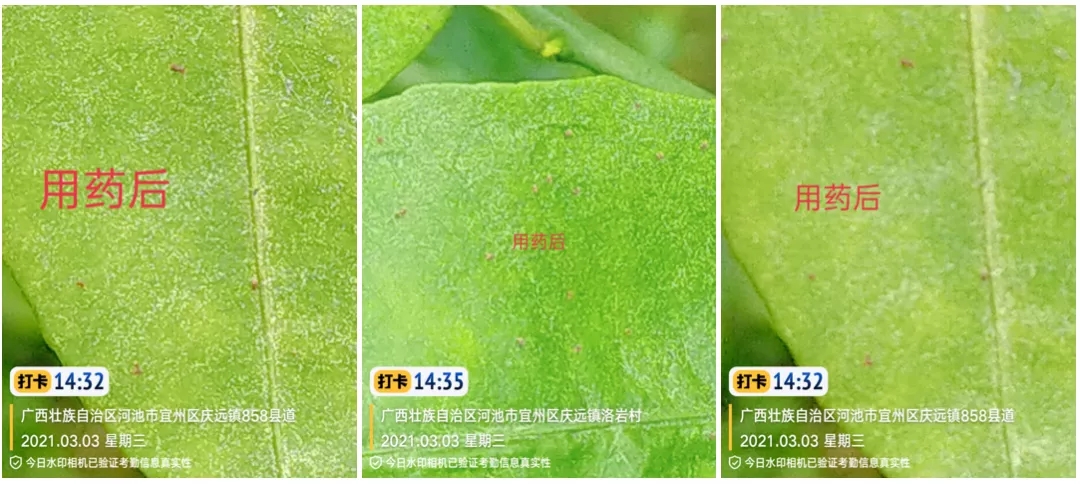邮箱:amanda@sixf.com.cn 电话: 400-6597-130
How to deal with the repeated outbreaks of citrus red spider
2025-04-15 11:34
Red spider is one of the important pests on citrus, with characteristics such as high incidence, long damage period, and strong drug resistance, making it quite difficult to entangle.
Although its harm is not as severe as that of infected psyllids, it is like a "blunt knife cutting flesh", inflicting damage on citrus trees again and again until the trees decline and the leaves and fruits become poor.
红蜘蛛——柑橘虫害界的“一哥”

Citrus red spiders hibernate as eggs or adult mites on the back of citrus leaves or in the bud seams of branches. They start to move to the spring shoots in March every year to cause harm. The suitable temperature for development and reproduction is 20-30℃. There can be 12-20 generations in a year. There are two peak periods of occurrence in a year, namely spring and autumn. The first peak period is from March to May, which harms the spring shoots; the second peak period is from August to October, which harms the autumn shoots. There is a tendency to green. When the new shoots grow out, the mites on the old leaves move to the new shoots. When the temperature is higher than 35℃ or lower than 12℃, the number of mites decreases sharply.

Red spider mites like to feed on the juice on the branches and leaves of citrus. First, large and small light green to grayish white spots will appear on the leaves, causing the leaves to lose their green color; second, the leaves will be covered with dusty molting shells, and in severe cases, small pits will appear; third, there may be curled leaves, dead leaves, and early leaf fall, which seriously affects the tree's vigor.
In addition to branches, red spider mites also harm fruits. Not only will the fruits be small in shape and poor in quality in the later period, but there may also be a large number of fruit drops, which seriously affects the quality and yield of the orchard that year.

Why is it that despite repeated spraying of pesticides, citrus red spider mites cannot be controlled?
1. Small size, difficult to find: The individual is about 0.36mm small, not easy to find, miss the prevention and control time. Each time, more than 30 eggs are laid, and parthenogenesis can be achieved.
2. Tender tendency: The distribution of red spider mites shifts with the order of branch and shoot extraction. Eggs are mostly laid on leaves, fruits and tender branches, mostly on both sides of the main veins on the back of the leaves.
3. Serious generation overlap: Red spider mites are divided into four periods: eggs, young mites, nymphs and adult mites. The four insect forms exist at the same time. (20-30 degrees) 12-20 generations can occur in a year, and one generation can be 3-5 days. A female adult mite lays more than 30 eggs each time, and the reproductive limit in one month can be as high as more than 100 million. It can reproduce parthenogenetically, easily acquire drug resistance and pass it on to the next generation.
4. The awareness of scientific drug use is poor, fruit farmers use drugs improperly, and resistance soars. Acaricides with the same ingredients are used repeatedly. Secondly, in order to achieve the desired mite-killing effect, farmers do not use them according to the recommended concentration, but arbitrarily increase the usage multiples, which leads to increased resistance. Some pesticides are unable to penetrate the red spider's back hair to reach the epidermis, and then penetrate the epidermis to reach the dermis, and thus fail to achieve a true mite-killing effect.

Red spider mites reproduce so quickly and are so stubborn, how can we prevent and control them?
1. Cultivate natural enemies
These are what we often call predatory mites. Generally, one predatory mite per leaf can effectively control red spider mites. However, predatory mites take a long time to take effect. If red spider mites have already broken out, chemical control is still the main method.
2. Control by chemicals.
Here, the editor recommends a new generation of dorsal hair-dissolving, water-dried mite-killing insecticides - Daguanyin® and Chongjiang®, which can effectively dissolve the dorsal hair of red spiders and quickly penetrate the body wall of red spiders to achieve a rapid mite-killing effect, and have no cross-resistance with other miticides!

Let you truly witness: Killing mites only takes three steps!



Note: When spraying pesticides, make sure to use enough water and spray thoroughly.
Red spider mites usually lay eggs on the back of leaves and in the grooves of branches, which is not conducive to pesticide coverage, so you must be careful and careful when applying pesticides, and never miss any.
Remove leaves with serious red spider bites or eggs, take them out of the planting area and destroy them in a centralized manner.
Copyright © 2020-2021 SixF Crop Protection Co., Ltd. All rights reserved Powered by SIXF